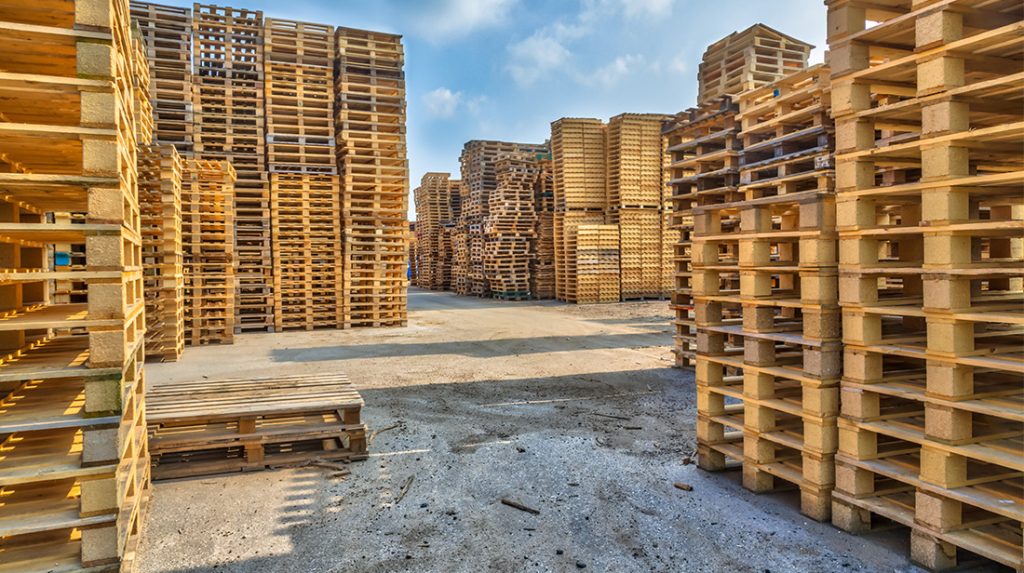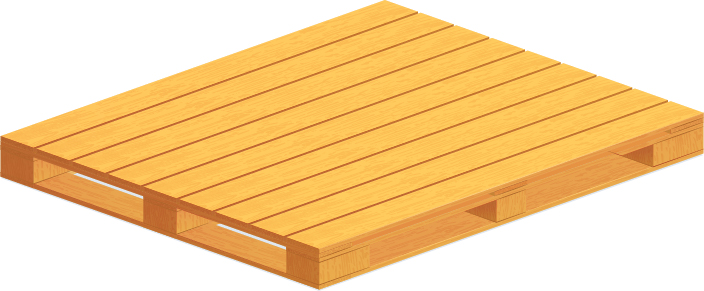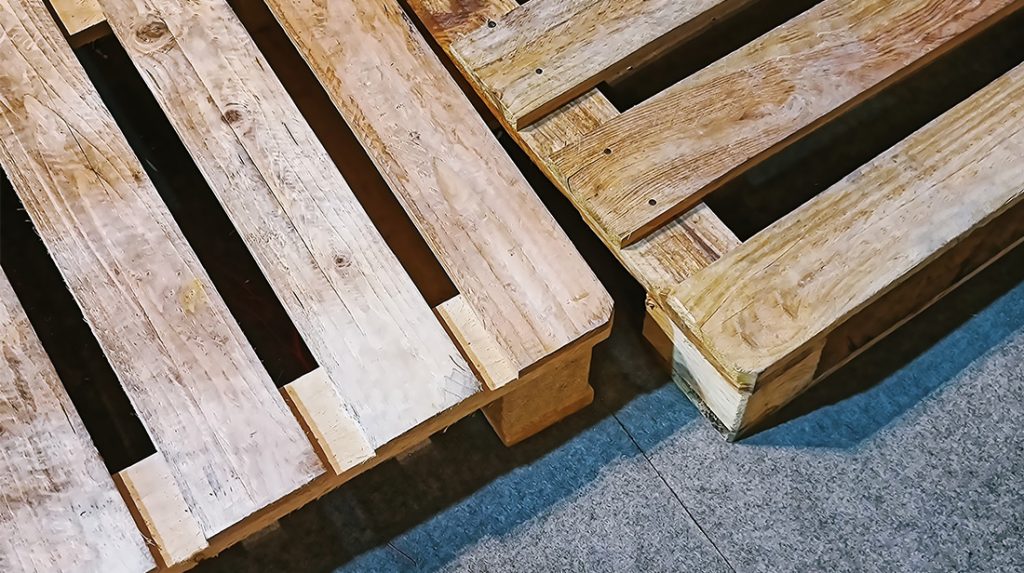
Have you ever wondered what is the difference between a skid and a pallet? It’s a common mix-up, but it’s also an important detail for materials handling and forklifts. Simply put, a skid and a pallet are not the same thing. They look similar, sure, but they have different uses and designs that matter a lot when you’re moving goods around. In this blog, we’re going to break down these differences in a way that’s easy to understand. Whether you’re in a warehouse, a distribution centre, or just curious, knowing these differences can help make your work smoother and safer. So, let’s dive in and clear up the confusion about skids and pallets.
Defining the basics: Skids and pallets
What is a skid?
So, what exactly is a skid? In simple terms, a skid is a flat transport structure. It’s typically made of wood, although sometimes metal or plastic is used. A key feature of a skid is its single-deck design. It has a top deck but no bottom deck, making it somewhat different from a pallet.
Skids are really the old-school relatives of transportation. They’re pretty straightforward: a platform with legs or runners attached underneath. These legs give enough clearance for lifting with forklifts, but there’s a catch – skids are usually moved by dragging or sliding, not lifting.

In terms of uses, skids are great for static storage of heavy goods. They’re also a go-to choice for shipments that don’t require a lot of moving around, or for supporting machinery that doesn’t need to be frequently relocated. Their simplicity and sturdiness make them reliable, though not as versatile as pallets. So, when you hear someone ask what is a skid, you can think of it as the no-frills, sturdy base for storing and moving heavy items.
What is a pallet?
Now, let’s talk about pallets. If a skid is the basic model, think of a pallet as the upgraded version. So, what is a pallet exactly? A pallet is also a flat structure used for transport and storage, but it’s a bit more sophisticated than a skid. It’s usually made from wood, plastic, or metal and has both a top and a bottom deck. This double-deck design is what sets it apart from a skid.
Pallets are the all-rounders in warehouses and shipping areas. They are designed to be easily lifted by forklifts, pallet jacks, or front loaders, thanks to the space provided by the bottom deck. This design not only makes them more versatile for moving around but also allows for better stacking and storage.

In practical terms, pallets are super handy for transporting a wide variety of goods. They’re especially useful when you need to move items frequently or stack them in storage areas. They provide more stability and support than skids, making them a popular choice in most logistics and storage operations. So, whenever you see goods being whisked away smoothly on a forklift, chances are they’re sitting on a pallet.
Key differences between skids and pallets
The primary difference between a skid and a pallet lies in their structure and functionality. Skids are suited for stationary or single-level storage due to their single-deck design, whereas pallets, with their double-deck structure, are ideal for dynamic handling and multi-level storage. These differences are crucial in determining how materials are managed effectively in various settings, impacting everything from storage efficiency to transportation safety.
Practical applications: Choosing between skids and pallets
When it comes to the difference between a skid and a pallet, knowing when to use each can make a big difference in efficiency and safety. Let’s look at some real-case scenarios where one might be more advantageous than the other.
When to opt for skids
Skids are your best bet in situations where mobility isn’t a primary concern, but strength and simplicity are. For instance, imagine you’re in a warehouse storing heavy machinery that doesn’t need to be moved often. In this case, skids are ideal because they provide a solid, stable base and can handle the weight easily. Their lack of a bottom deck means they can’t be stacked high, but that’s not a problem here.
Another scenario where skids shine is in temporary settings, like construction sites. Here, they’re often used as a base for heavy equipment or as makeshift platforms. Their durability and ease of sliding make them suitable for such rugged environments. Plus, when space is at a premium, skids can be a real space-saver as they’re easier to store when not in use.
Ideal situations for pallet use
Pallets, on the other hand, are the heroes of dynamic environments where goods are moved frequently. Take a busy distribution centre, for example. Here, pallets are invaluable because they can be quickly and easily lifted by forklifts, making moving stock a breeze. Their double-deck design offers stability for a variety of goods, from boxes of merchandise to bulkier items.
Another perfect setting for pallets is in retail warehouses. They enable efficient stacking and storage, maximising space utilisation. Additionally, in scenarios where goods need to be shipped, pallets are the go-to choice. They not only protect the goods during transit but also simplify loading and unloading processes.
Impact on forklift operations and material handling
The choice between using skids or pallets has a significant impact on forklift operations and the overall efficiency of material handling. For instance, pallets, with their double-deck design, are tailor-made for forklifts. They allow for easy lifting, moving, and stacking, which streamlines the workflow in busy warehouses and distribution centers. Forklift operators find pallets more manageable, especially when it comes to transporting goods quickly and safely.
On the other hand, skids, due to their single-deck structure, are less forklift-friendly. They’re more suited to situations where goods are stationary or moved infrequently. In environments where forklift use is a daily necessity, pallets are undoubtedly the more efficient choice.

Ensuring quality and safety in materials handling
When it comes to using skids and pallets in materials handling, quality and safety are non-negotiable. It’s essential to choose the right type – be it a skid or a pallet – for the specific task to ensure that goods are not only transported efficiently but also securely. Poorly chosen or damaged platforms can lead to accidents and damage to goods. Regular checks for wear and tear, especially in high-use environments, are crucial. Whether it’s a skid supporting heavy machinery or a pallet carrying loads across a warehouse, ensuring they are in top condition is key to maintaining a safe and productive workplace. This attention to quality and safety is not just about compliance; it’s about protecting people and goods, which is always a top priority in materials handling.
Conclusion
In conclusion, understanding the difference between a skid and a pallet is crucial in the materials handling and forklift industry. Skids, with their simple, sturdy design, are ideal for stationary storage or supporting heavy items. Pallets, offering greater versatility, are the go-to for moving, lifting, and stacking goods efficiently in more dynamic environments. Choosing the right one for your specific needs can significantly enhance operational efficiency and safety.
If you’re still wondering which is best for your situation, or if you need expert advice on forklifts and materials handling solutions, don’t hesitate to reach out to Hyworth Forklifts. Our team is ready to provide you with the guidance and solutions tailored to your unique requirements. Contact us today – let’s make your materials handling smoother and safer.